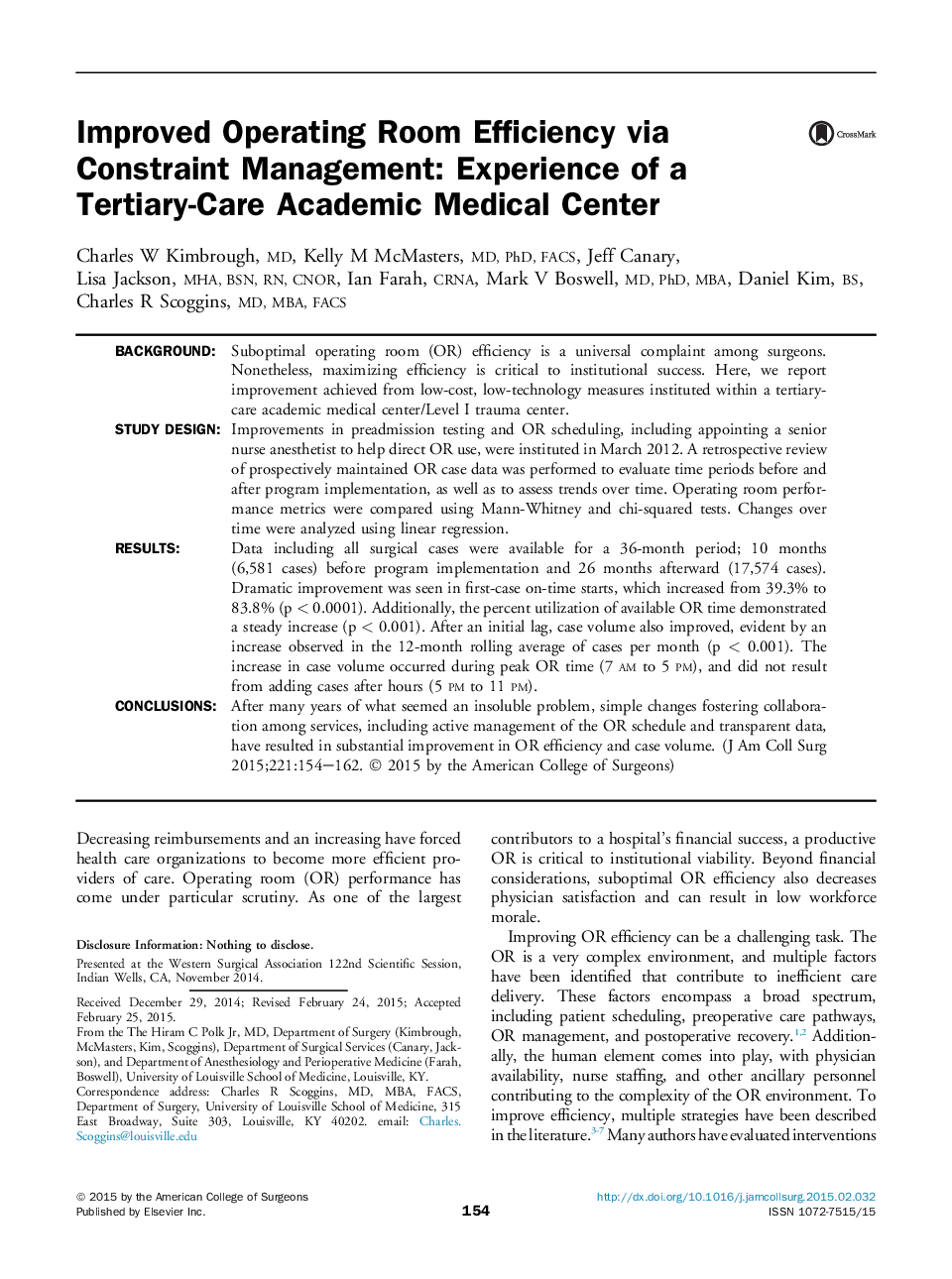| Article ID | Journal | Published Year | Pages | File Type |
|---|---|---|---|---|
| 4291096 | Journal of the American College of Surgeons | 2015 | 9 Pages |
BackgroundSuboptimal operating room (OR) efficiency is a universal complaint among surgeons. Nonetheless, maximizing efficiency is critical to institutional success. Here, we report improvement achieved from low-cost, low-technology measures instituted within a tertiary-care academic medical center/Level I trauma center.Study DesignImprovements in preadmission testing and OR scheduling, including appointing a senior nurse anesthetist to help direct OR use, were instituted in March 2012. A retrospective review of prospectively maintained OR case data was performed to evaluate time periods before and after program implementation, as well as to assess trends over time. Operating room performance metrics were compared using Mann-Whitney and chi-squared tests. Changes over time were analyzed using linear regression.ResultsData including all surgical cases were available for a 36-month period; 10 months (6,581 cases) before program implementation and 26 months afterward (17,574 cases). Dramatic improvement was seen in first-case on-time starts, which increased from 39.3% to 83.8% (p < 0.0001). Additionally, the percent utilization of available OR time demonstrated a steady increase (p < 0.001). After an initial lag, case volume also improved, evident by an increase observed in the 12-month rolling average of cases per month (p < 0.001). The increase in case volume occurred during peak OR time (7 am to 5 pm), and did not result from adding cases after hours (5 pm to 11 pm).ConclusionsAfter many years of what seemed an insoluble problem, simple changes fostering collaboration among services, including active management of the OR schedule and transparent data, have resulted in substantial improvement in OR efficiency and case volume.
